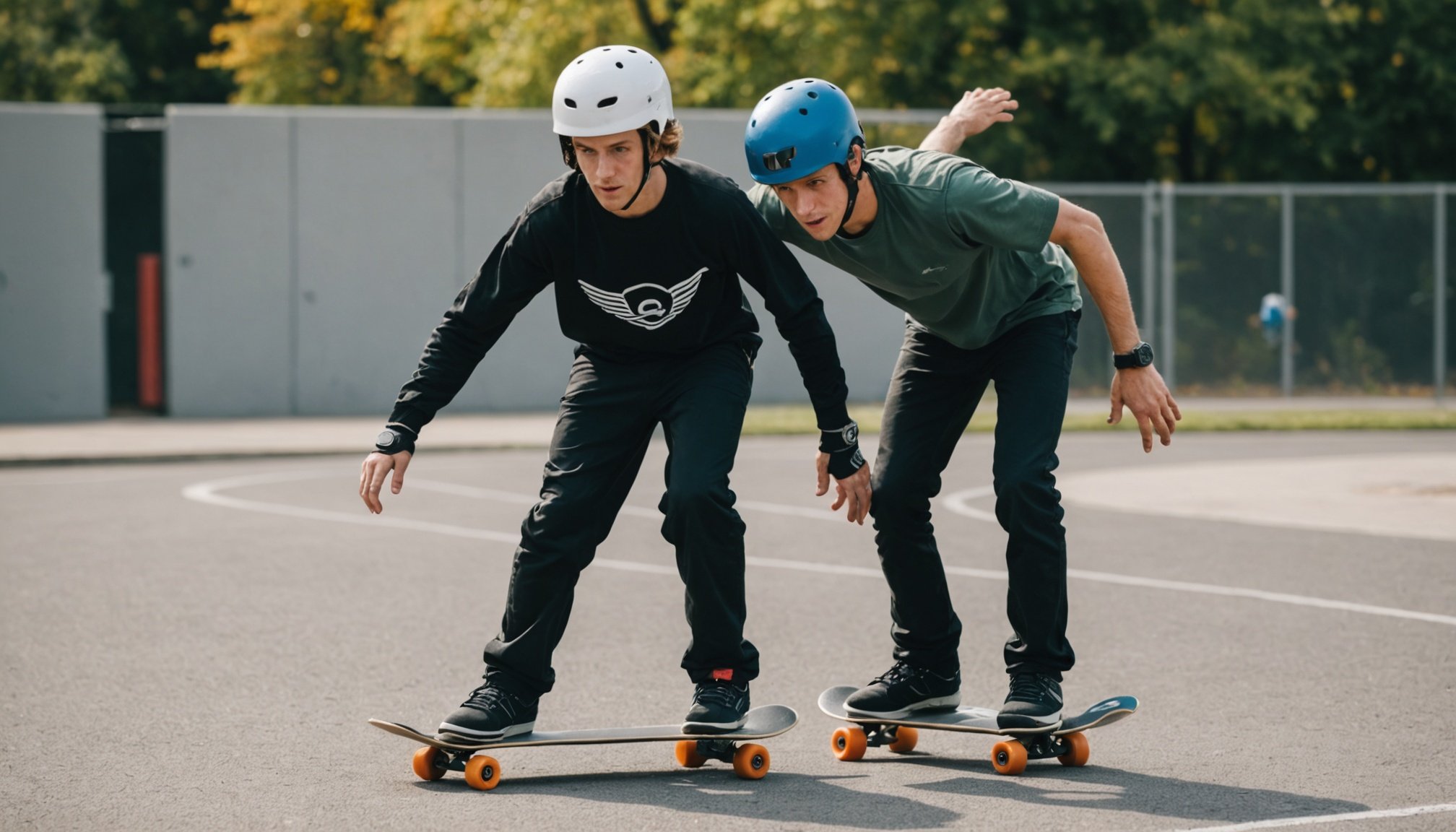Choosing the Right Protective Gear for Competitive Skateboarding: A Comprehensive Guide
Understanding the Importance of Protective Gear
When it comes to competitive skateboarding, safety is paramount. The sport involves high speeds, intricate tricks, and a significant risk of injury. Protective gear is not just a recommendation; it is a necessity to ensure that skaters can perform at their best while minimizing the risk of harm.
“Protective gear is the first line of defense against injuries in skateboarding. It’s not just about wearing a helmet; it’s about ensuring every part of your body that could be vulnerable is protected,” says a veteran skateboarder.
Also to read : Top Methods for Creating High-Altitude Training Environments for Mountain Bikers
Essential Protective Gear for Skateboarding
Helmet
The helmet is the most critical piece of protective gear for any skateboarder. Here are some key points to consider when selecting a skateboard helmet:
- Safety Standards: Ensure the helmet meets safety standards such as those set by the Consumer Product Safety Commission (CPSC) or the Snell Memorial Foundation. These standards guarantee that the helmet can withstand significant impact.
- Fit: The helmet should fit snugly but not too tightly. It should be adjustable to accommodate different head sizes.
- Visibility: Opt for a helmet with good visibility, especially if you plan to skate in low-light conditions.
- Ventilation: A well-ventilated helmet can keep you cool during long skate sessions.
Knee Pads
Knee pads are crucial for protecting your knees from scrapes and bruises. Here’s what to look for:
In the same genre : Top Strategies for Optimal Recovery After Competing in a Pentathlon
- Triple Pad Design: Look for knee pads with a triple pad design, which provides extra protection for the knee cap, the area above the knee, and the area below.
- Heavy Duty: For competitive skateboarding, heavy-duty knee pads with hard shells are recommended.
- Adjustable Straps: Ensure the knee pads have adjustable straps to secure them in place.
Elbow Pads
Elbow pads are often overlooked but are equally important for protecting your elbows from impact.
- Hard Shell: Opt for elbow pads with a hard shell to provide maximum protection.
- Flexible Material: The pads should be made from a flexible material that allows for a full range of motion.
- Adjustable Fit: Ensure the elbow pads have adjustable straps for a secure fit.
Wrist Guards
Wrist guards are essential for preventing wrist injuries, especially during falls.
- Hard Shell or Inserts: Look for wrist guards with hard shells or inserts to provide maximum protection.
- Comfortable Fit: Ensure the wrist guards fit comfortably and do not restrict movement.
- Adjustable Straps: Adjustable straps will help keep the wrist guards in place.
Detailed Checklist for Selecting Protective Gear
Here is a detailed checklist to help you select the right protective gear:
- Helmet:
- Meets safety standards (CPSC or Snell)
- Snug but adjustable fit
- Good visibility
- Well-ventilated
- Knee Pads:
- Triple pad design
- Heavy duty with hard shells
- Adjustable straps
- Elbow Pads:
- Hard shell
- Flexible material
- Adjustable fit
- Wrist Guards:
- Hard shell or inserts
- Comfortable fit
- Adjustable straps
Comparing Different Brands and Models
When choosing protective gear, it’s important to compare different brands and models to find the best fit for your needs. Here is a comparative table of some popular brands:
| Brand | Helmet | Knee Pads | Elbow Pads | Wrist Guards |
|---|---|---|---|---|
| Venom | Meets CPSC standards, adjustable fit | Triple pad design, heavy duty | Hard shell, flexible material | Hard shell, comfortable fit |
| Enuff | Snell certified, well-ventilated | Heavy duty with hard shells | Adjustable fit, flexible material | Adjustable straps, hard shell |
| Bones | CPSC certified, good visibility | Triple pad design, adjustable straps | Hard shell, comfortable fit | Hard shell or inserts, adjustable straps |
Practical Tips for Skaters
Sizing and Fit
- Always try on the gear before purchasing to ensure a comfortable and secure fit.
- Make sure the gear is designed for skateboarding and not for other sports like biking, as the protection needs can differ.
Maintenance
- Regularly inspect your gear for any signs of wear and tear.
- Replace any gear that shows significant damage or has been involved in a serious impact.
Rules and Regulations
- Familiarize yourself with the rules and regulations of the competitions you participate in. Some events may have specific requirements for protective gear.
Real-Life Examples and Anecdotes
Many professional skateboarders can attest to the importance of protective gear. For instance, Tony Hawk, a legendary skateboarder, has often spoken about the importance of wearing a helmet during his career.
“I’ve had my share of falls, but wearing a helmet has saved me from serious head injuries multiple times,” Hawk once said in an interview.
Advanced Materials and Technology
Protective gear has evolved significantly with advancements in technology. Here are some key advancements:
- Lightweight Materials: Modern protective gear is made from lightweight materials that provide superior protection without adding bulk.
- Breathable Designs: Many helmets and pads now come with breathable designs to keep skaters cool during long sessions.
- Customizable Fit: Some brands offer customizable fits to ensure the gear fits perfectly, enhancing both comfort and protection.
Community and Safety Standards
The skateboarding community plays a crucial role in promoting safety standards. Here are some ways the community contributes:
- Workshops and Clinics: Many skate parks and communities organize workshops and clinics to educate skaters about the importance of protective gear.
- Peer Influence: Skaters often influence each other to wear protective gear, creating a culture of safety within the community.
- Sponsorships and Endorsements: Professional skateboarders often endorse protective gear, highlighting its importance to their younger fans.
Choosing the right protective gear for competitive skateboarding is not just about compliance with rules and regulations; it’s about ensuring your safety and well-being. By understanding the importance of each piece of gear, comparing different brands, and following practical tips, you can enhance your skateboarding experience while minimizing the risk of injury.
Remember, safety should always be your top priority when it comes to skateboarding. As the saying goes, “Safety first, skate forever.”











